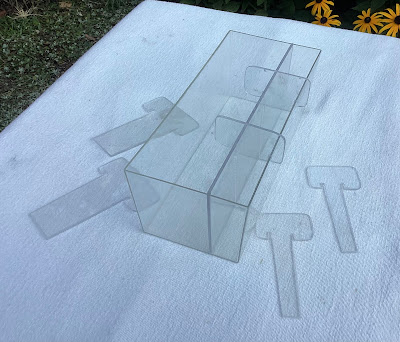Sweet, Swallowtails!
Hop Trees are a host plant for the Eastern Giant Swallowtail. I have counted up to 13 caterpillars in one visit on these young trees and have had the pleasure of watching them grow! The caterpillar in the top picture is approximately 3 inches long.
One windy day I found a "train" of 3 caterpillars!
Giant Swallowtail caterpillars are appearing in all different sizes. Yesterday I watched this tiny caterpillar shed it's exoskeleton. (Black skin to right of caterpillar.)
The exoskeleton is now missing because the caterpillar ate it. Nothing goes to waste in nature!
Four Eastern Giant Swallowtail Caterpillars are visible in the photo! (if you look carefully!)
Adult, Eastern Giant Swallowtail! I did not have the opportunity to witness any egg laying. (nor could I find the well-camouflaged chrysalis's)
Eastern Tiger Swallowtail caterpillar, making a silk bed: This species has been more difficult for me to locate at the larval stage in 2024. The silk bed gives the caterpillar something to hold onto in windy weather so it doesn't slide off the leaf.
Young Black Swallowtail Caterpillar on Queen Anne's Lace. In my opinion, the number of caterpillars has been down this year.


























































